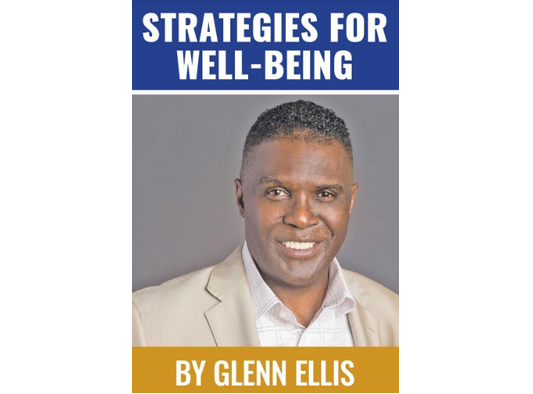By Glenn Ellis
September is Sickle Cell Disease Awareness Month, and COVID-19 has given the need for awareness more urgent than ever.
The Centers for Disease Control and Prevention (CDC) issued a statement a couple of weeks ago, that said “Having sickle cell disease (SCD) increases your risk for severe illness from COVID-19.”
It pointed out that people of any age with certain underlying medical conditions are at increased risk for severe illness from COVID-19. Like, seemingly, everything else about COIVD-19, Blacks/African Americans are carrying a much heavier burden as it relates to those with sickle cell disease. Thirty years ago, the U.S. sickle cell anemia population was estimated to be 32,000–50,000.
Today, assessing the number of individuals with SCD nationwide with sickle cell disease is, for all practical purposes, is impossible, since there is no coordinated system of data collection and reporting of the prevalence and death rate from this disease. Sadly, because of this, the number of individuals who died with or of sickle cell disease or even the number of individuals that go unreported, is unknown.
Back in 2010, a study in the American Journal of Preventive Medicine pointed out that the average age of death (39 years) and the proportion of individuals surviving to age 45 years (35 percent) were lower in 2006 than the proportion of individuals surviving (50 percent) before 1994. This is in spite of the presumed improvements in health care in this country.
Many of us don’t understand that sickle cell disease is a genetic condition. People who have it have inherited certain genes in their blood from their parents. If a child inherits a sickle cell gene from each parent, they have sickle cell disease. If a child inherits a sickle cell gene from one parent and a normal hemoglobin gene from the other has sickle cell trait rather than sickle cell disease.
Most people with sickle cell trait don’t have symptoms but can pass the gene to their children. Sickle cell disease disproportionately affects Black/African Americans in the United States as well as forebearers from sub‐Saharan Africa, the Western Hemisphere (South America, the Caribbean, and Central America), and some Mediterranean countries.
Symptoms and complications of sickle cell disease are different for each person and can range from mild to severe. However, people with the condition inherited a mutation that causes red blood cells to transform from a round shape into a sickle shape (a process called “sickling”). Healthy, round red blood cells are able to move easily through the blood vessels to carry oxygen to all parts of the body. Sickle-shaped red blood cells, however, are not able to flow through blood vessels as easily: They can get stuck and clog blood flow, which can inhibit oxygen delivery, damage blood vessels and lead to inflammation.
The symptoms of sickle cell disease include abdominal pain, bone pain, shortness of breath, delayed growth, fatigue, fever and chest pain. A bone marrow transplant may cure the disease; otherwise, treatment focuses on symptom management.
Due to the impact other infections can have on people living with sickle cell (including pneumonia and acute chest syndrome) anyone with a sickle cell disorder who has a worsening cough, difficulty in breathing or fever.
Dr. Mary T Basset, a physician during the Civil Rights movement, protested the fact that sickle cell disease research, screening, and treatment received little to no funding and argued that patients were neglected because most were of African American descent. As a result, one of the civil rights movements’ achievements was the establishment of the Sickle Cell Anemia Act of 1972. Since then, there has been more public awareness of the genetic disorder and it has led to more funding towards finding a cure for the disease. Now, the National Institutes of Health (NIH), spends about $100 million on sickle cell disease research each year.
The Case Western Reserve School of Medicine and University Hospitals in Cleveland Ohio, reports that, according to the NIH, “the only cure for sickle cell disease is a bone-marrow transplant, a procedure in which a patient receives bone marrow from a healthy, genetically-compatible sibling donor. However, transplants are too risky for many adults, and only about 18 percent of children with the disease have a healthy, matched sibling donor.”
There is some very promising hope as a result of the years of research. A young African American woman, Jennelle Stephenson, 28, who was born with sickle cell disease, fully recovered after receiving genetic treatment as part of an NIH clinical trial that might hold the key to a cure of this disease. This is truly exciting news.
In the meantime, we must especially remember that those with sickle cell disease are particularly vulnerable, and we have an obligation to ensure that they are protected and receiving the best of care.
COVID-19 can cause severe inflammation and injury to the lungs. This can take a greater toll if you have sickle cell disease, a group of inherited red blood cell disorders.
Be sure to stay well hydrated, wash your hands frequently and avoid close contact with other people who have symptoms of a respiratory infection.
Glenn Ellis, MPH is a Visiting Scholar at The National Bioethics Center at Tuskegee University and a Harvard Medical School Fellow in Research Bioethics and Writing. For more good health information visit: www.glennellis.com




